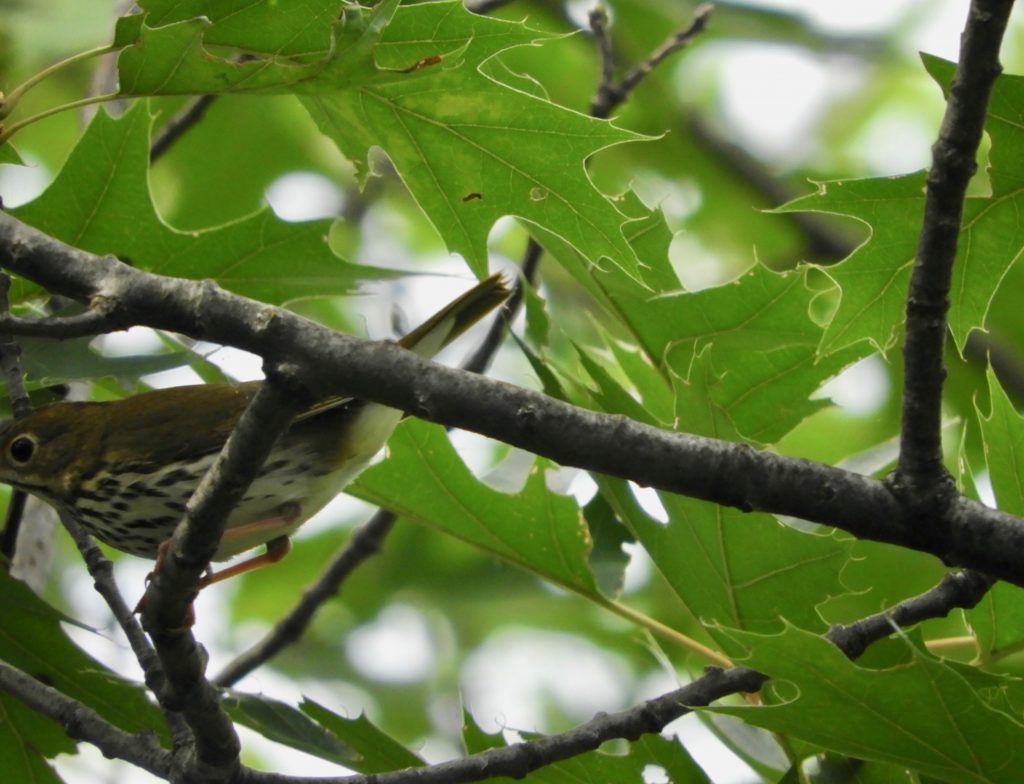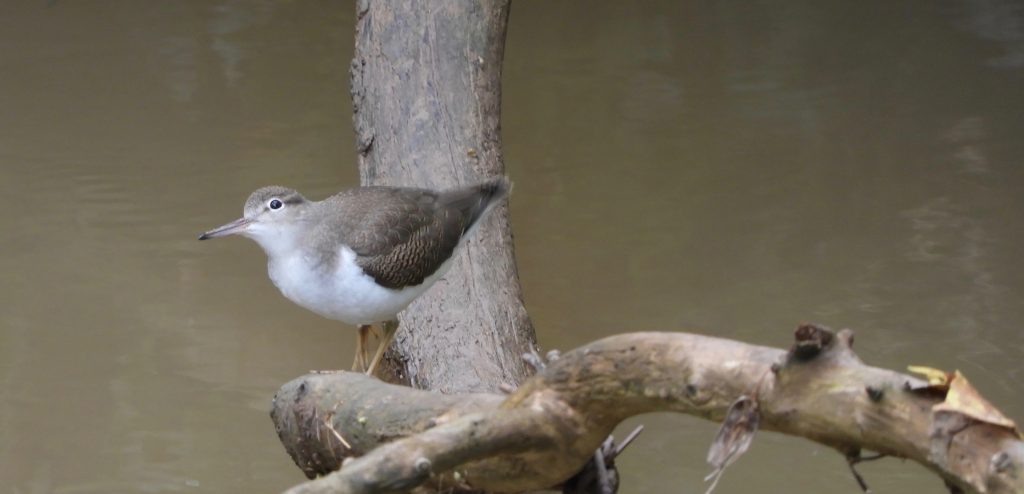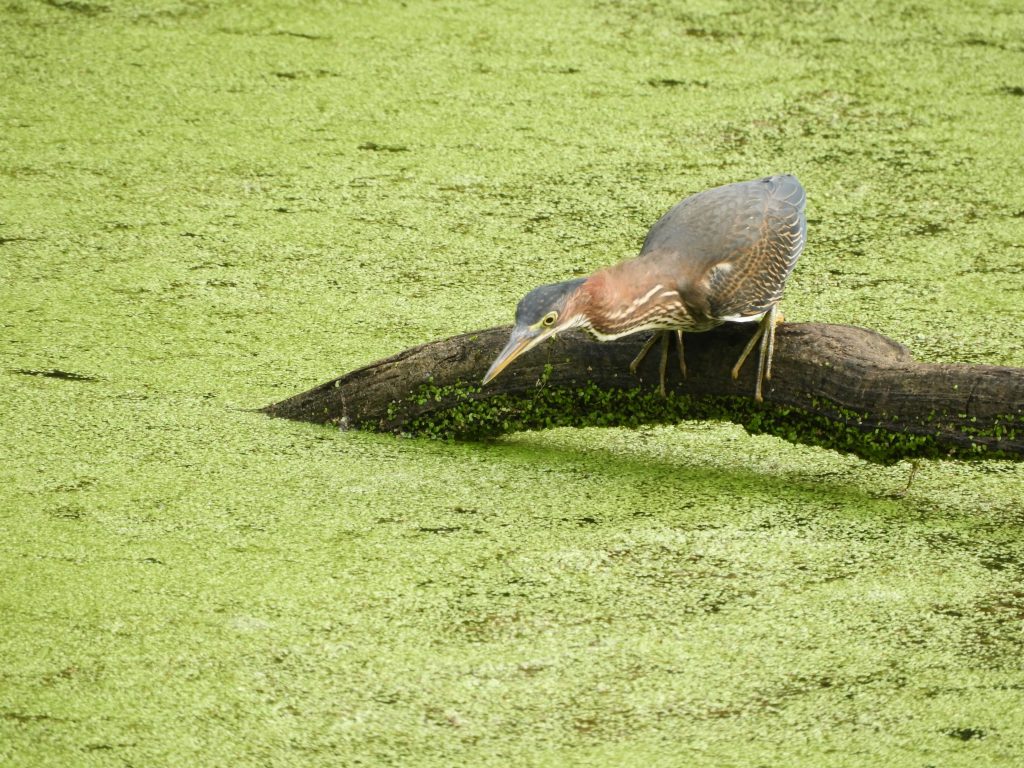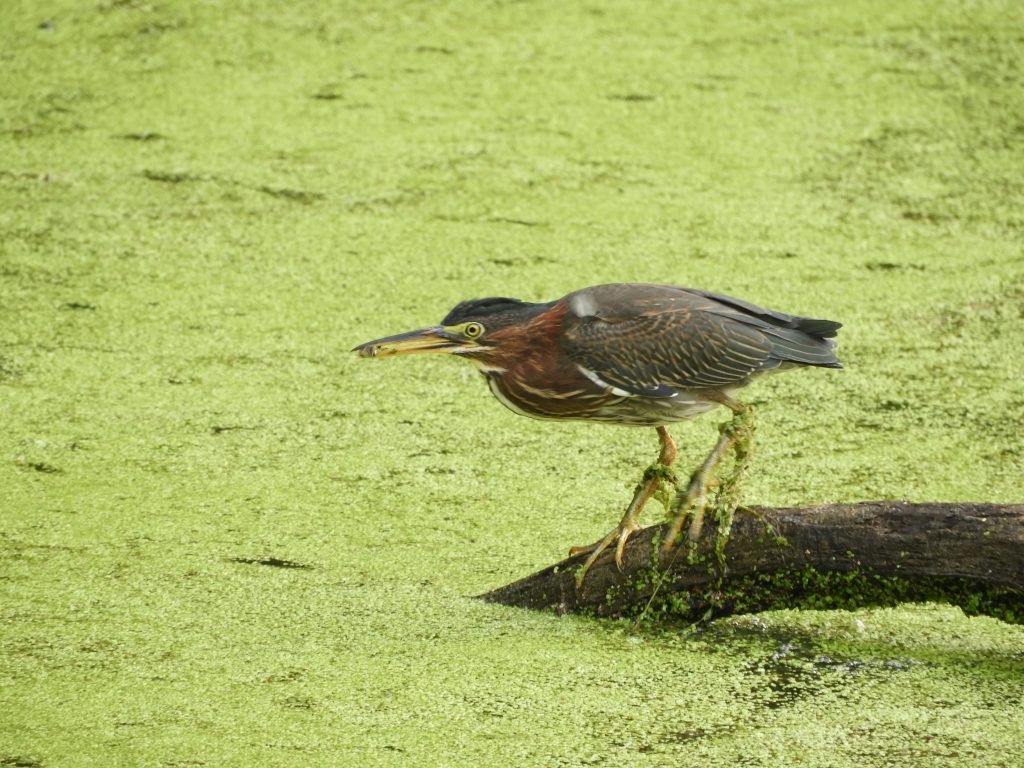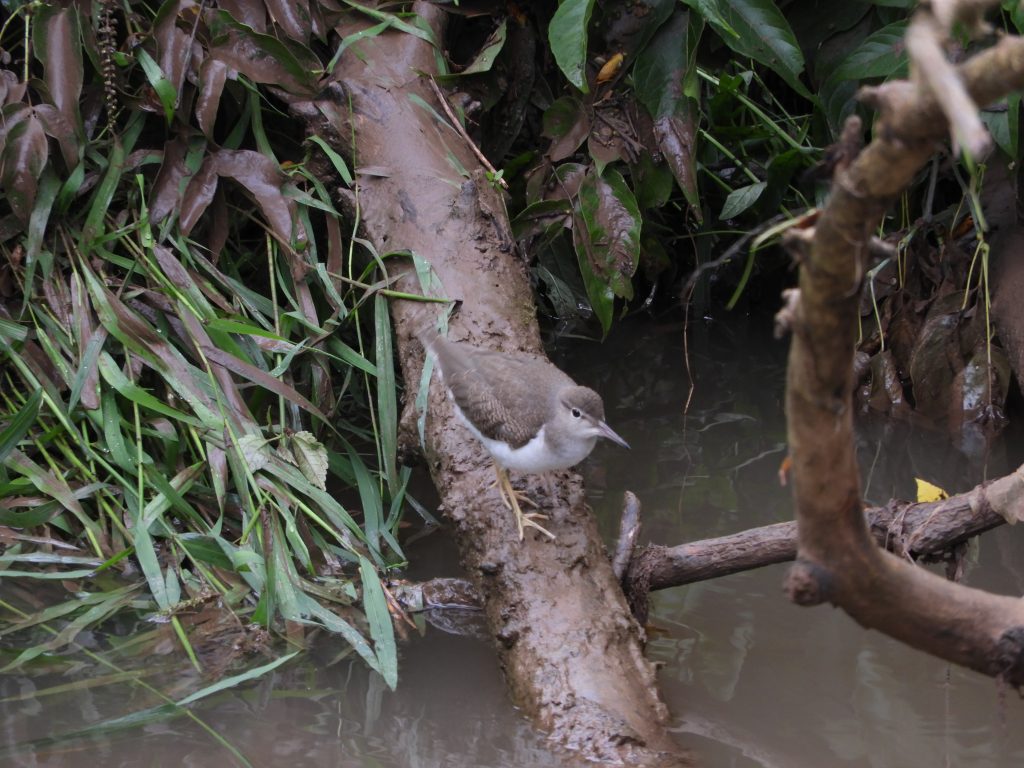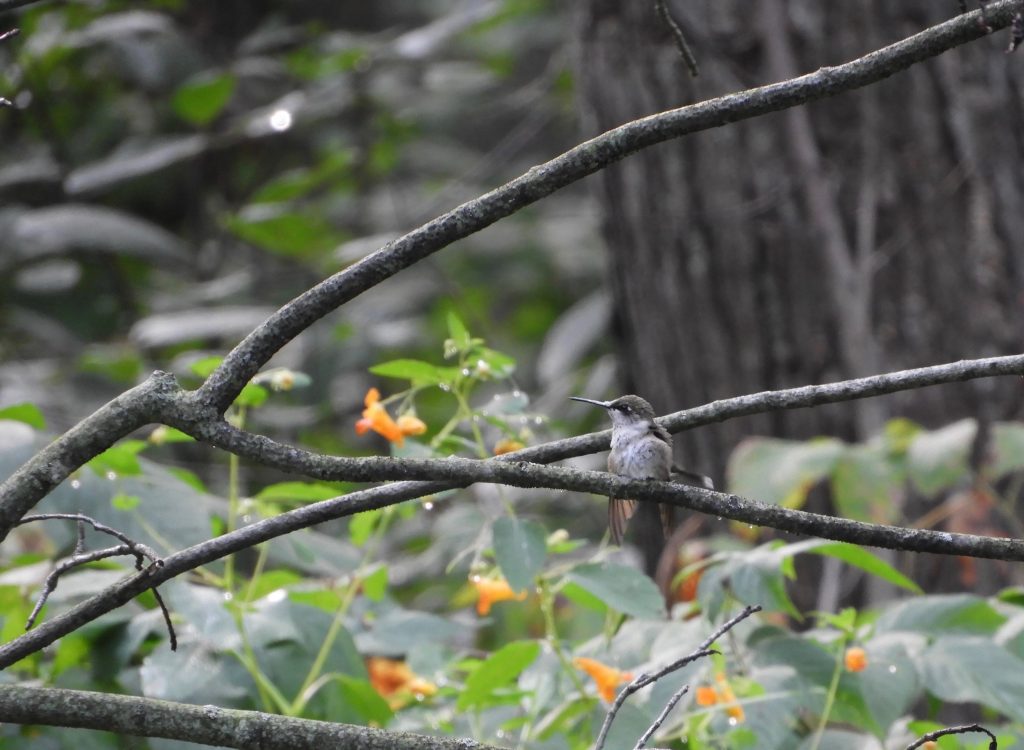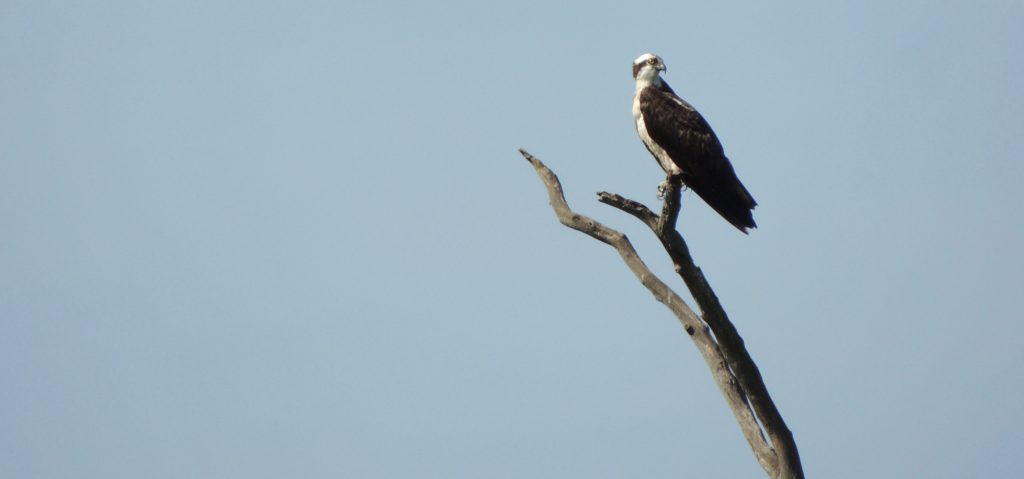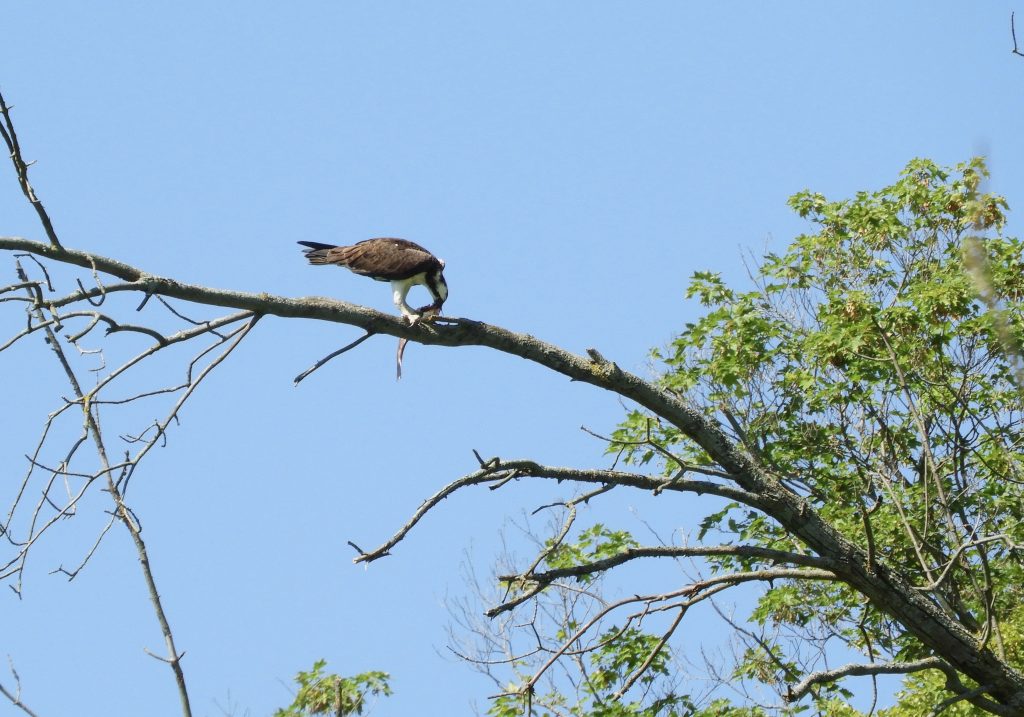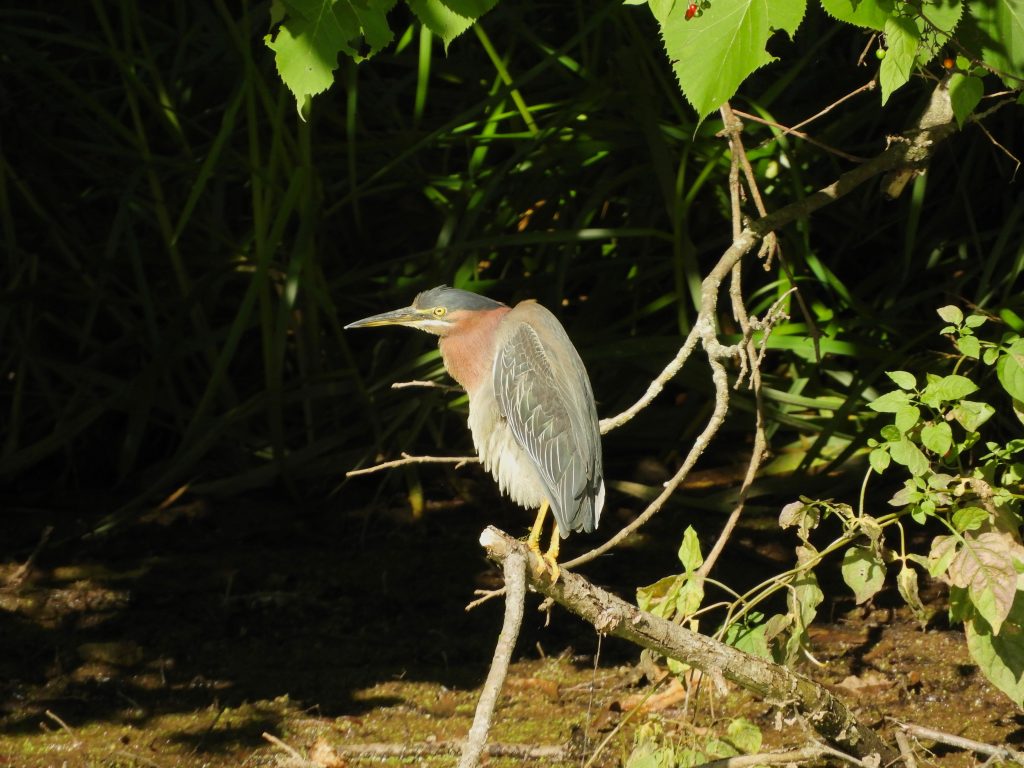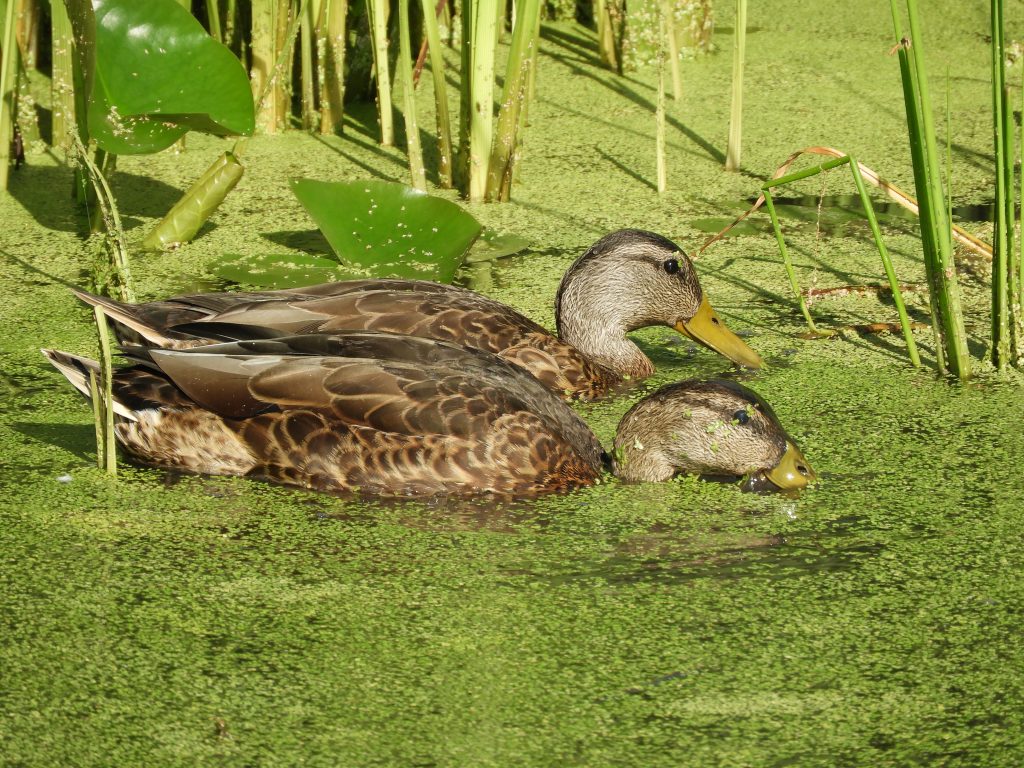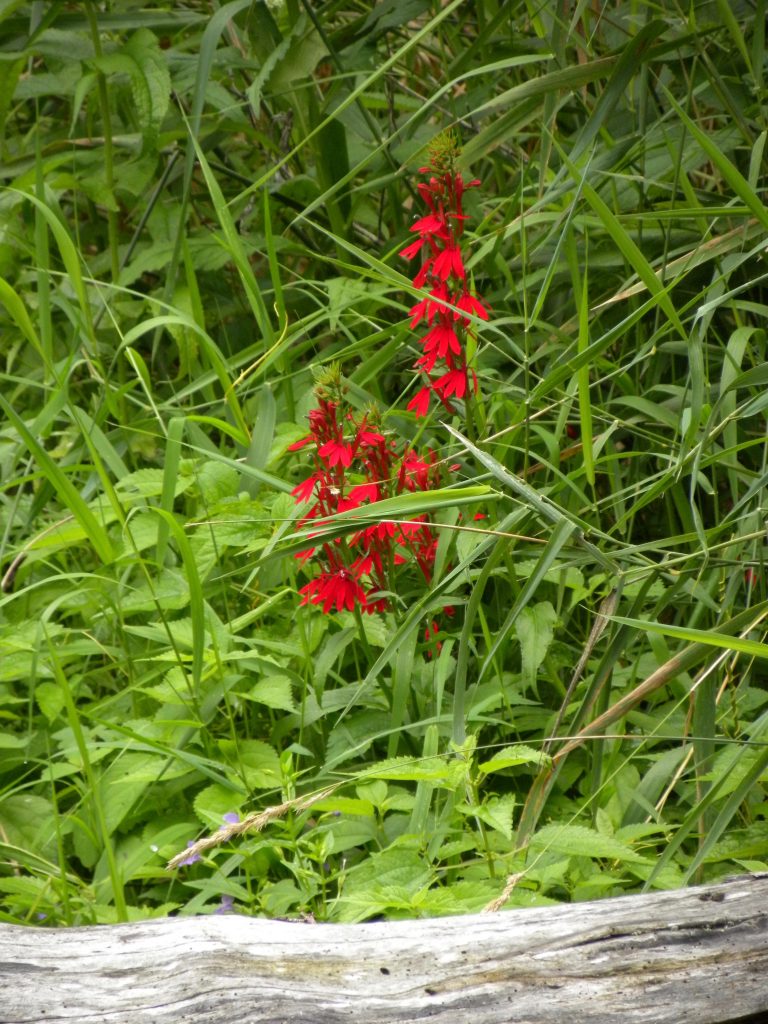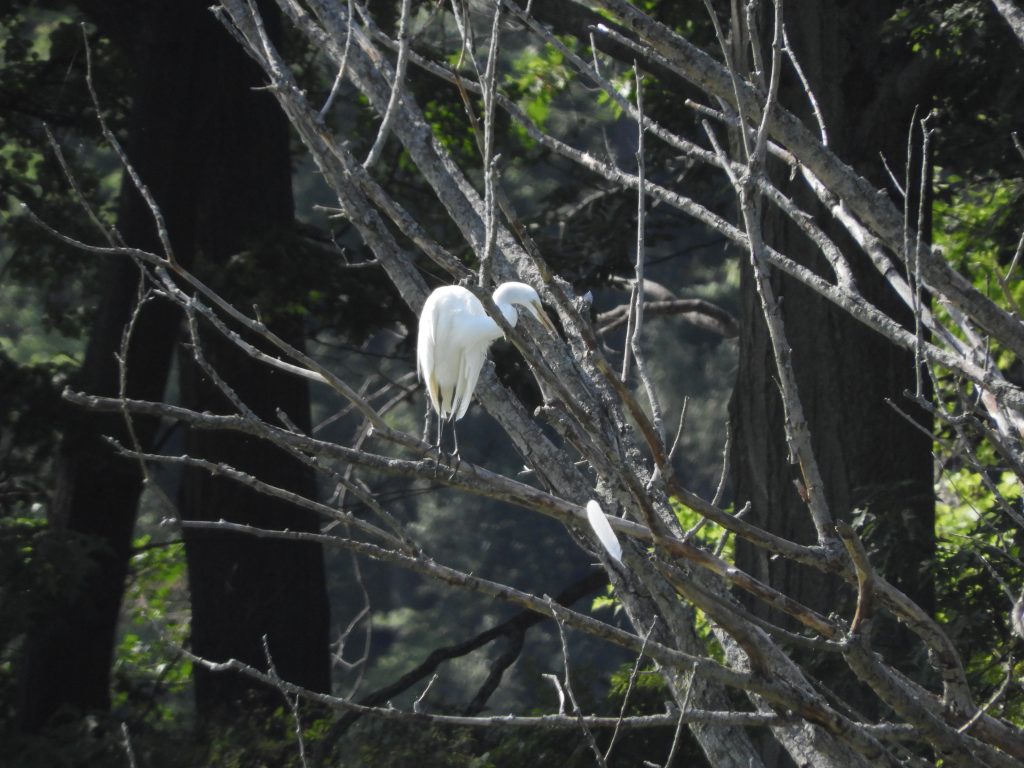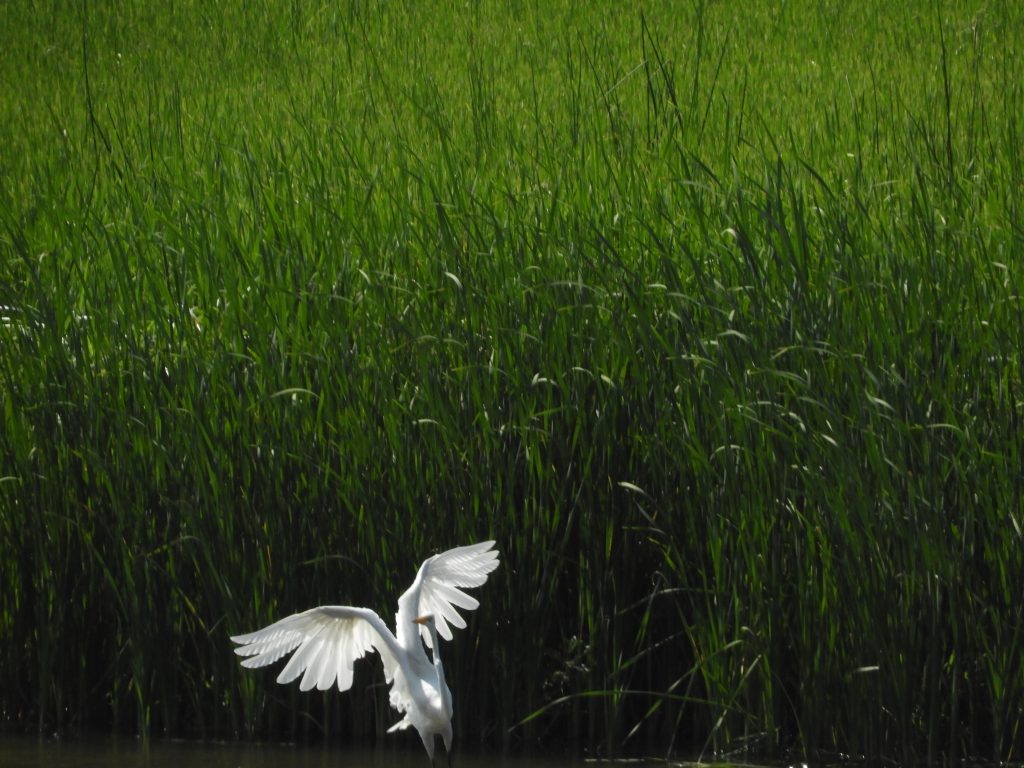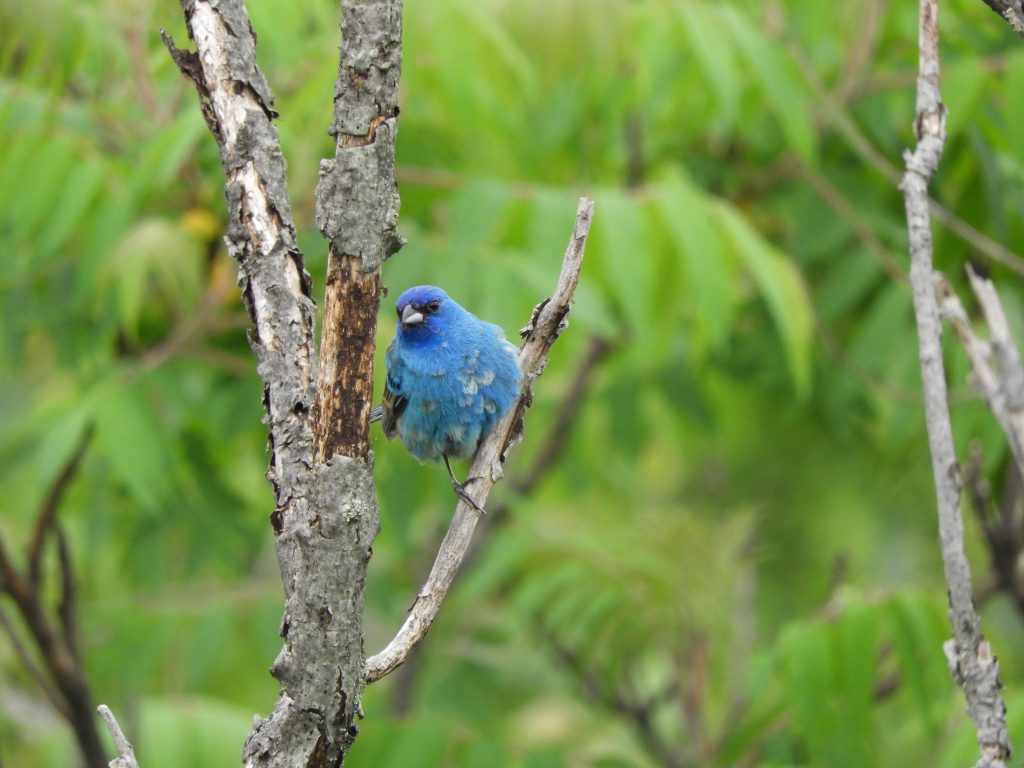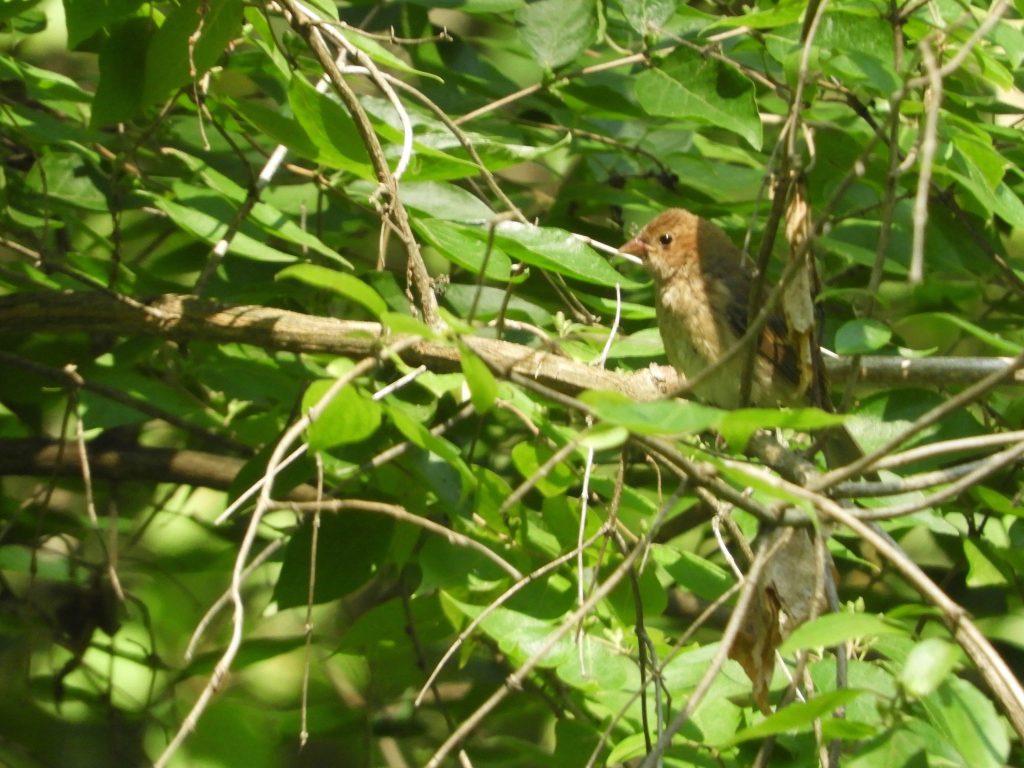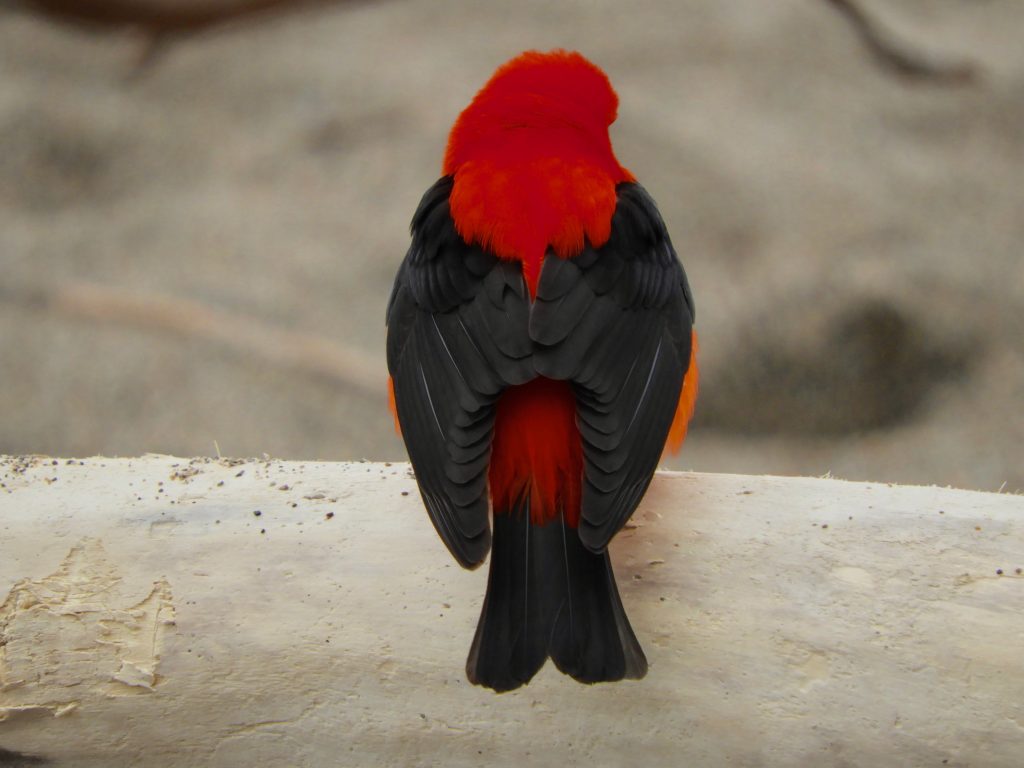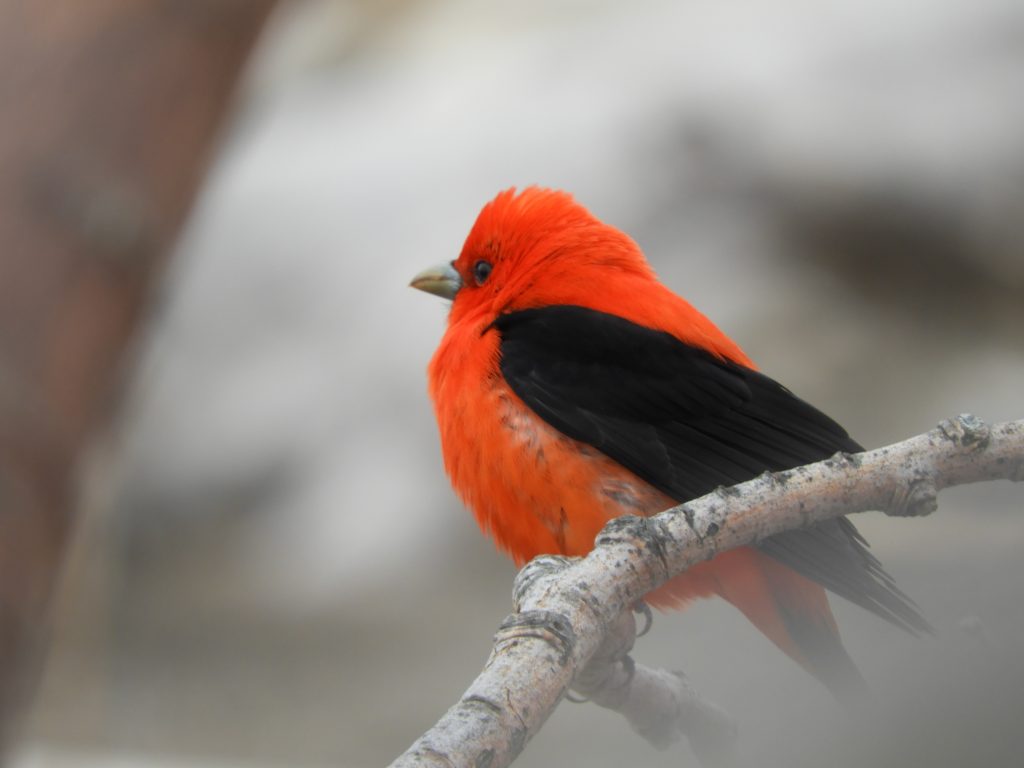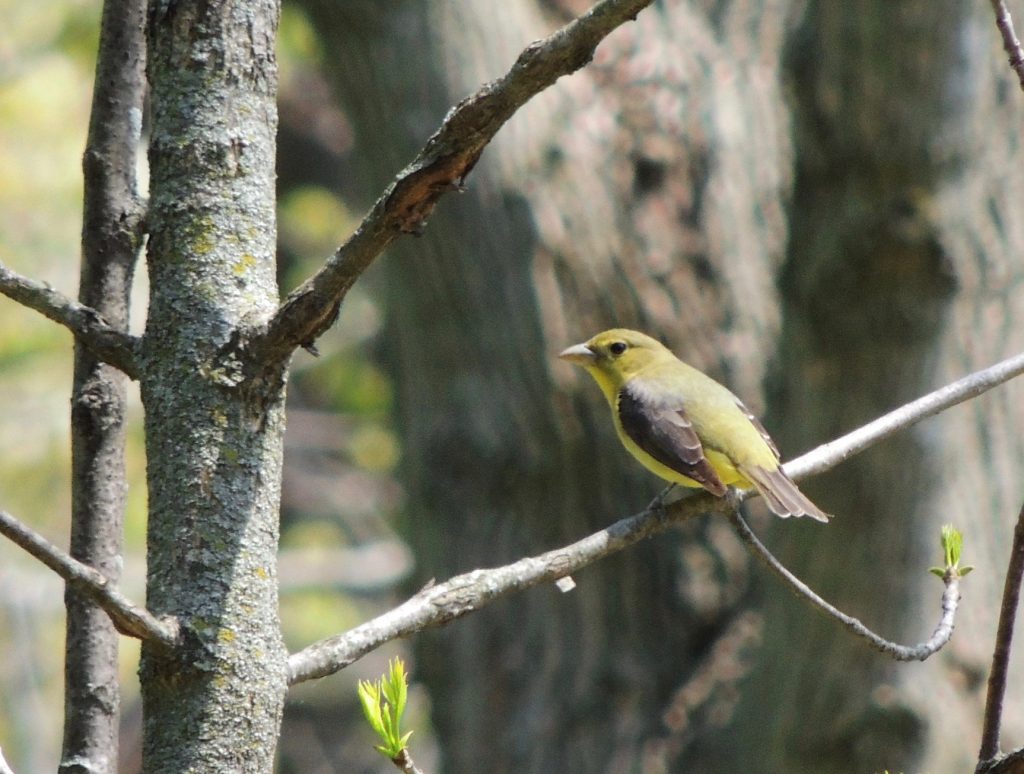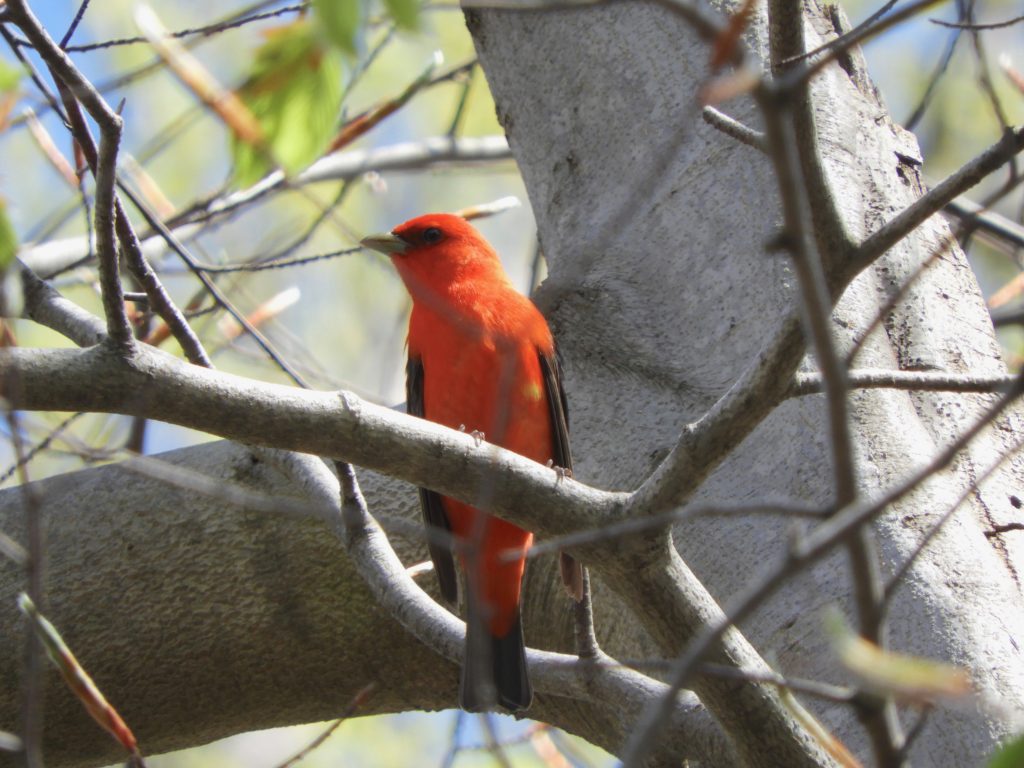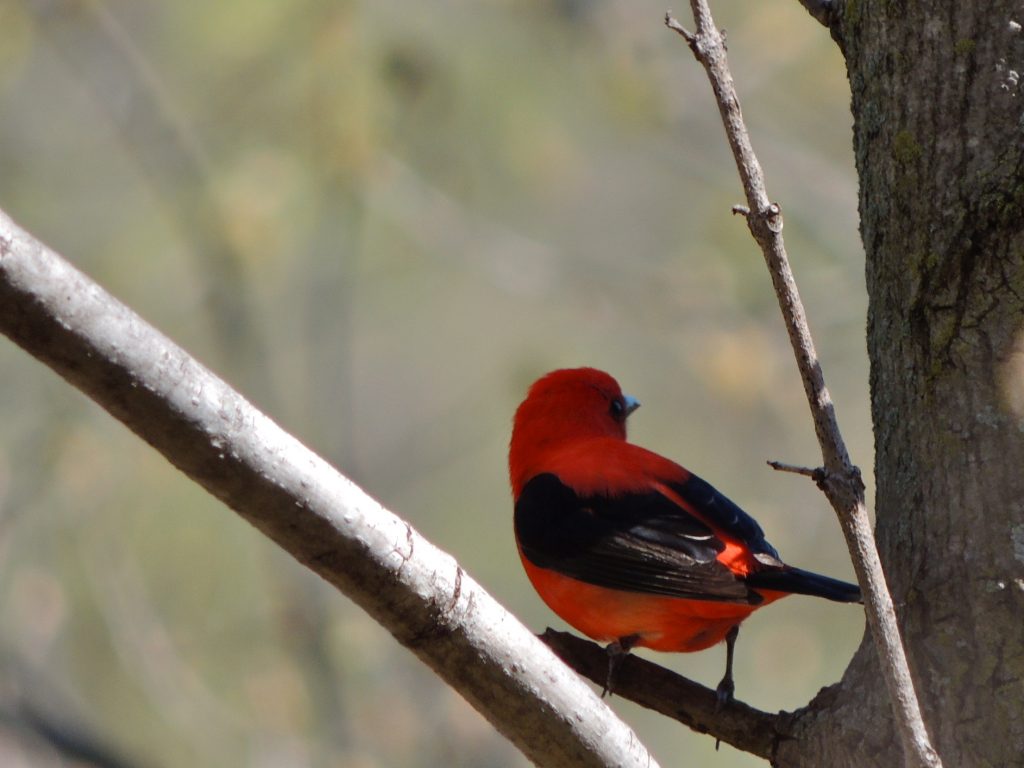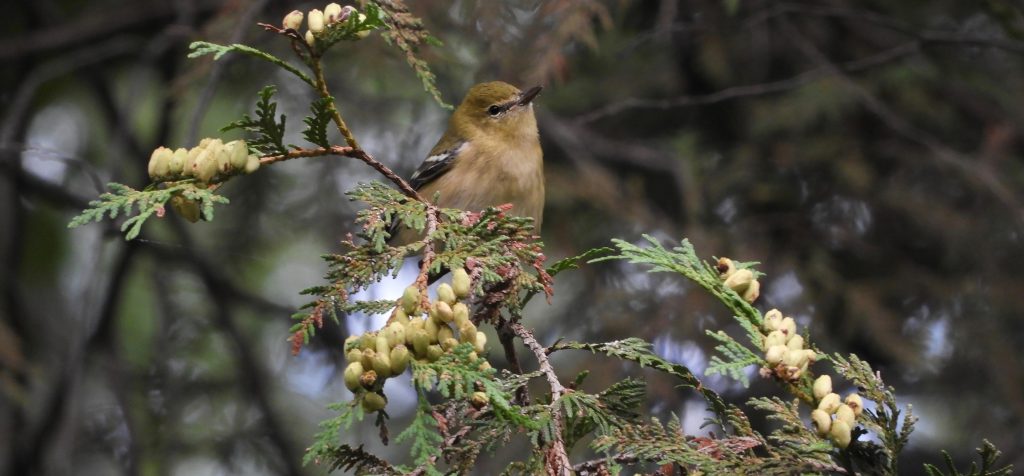
Woodland Cemetery, Burlington ON. September 1 .2021. I had quite forgotten how exciting, and at the same time frustrating, fall warbler-ing can be. Fall migration brings us all the same birds we met in May but now their young too; so, perhaps twice as many individual birds. To we onlooker-birders it’s complicated considerably by the changes in appearance wrought over the past 4 months: In spring there were males, often showy and cleanly marked, and their female companions looking very much like the males but usually a little paler, washed out and less precise – but still head-turners.
But in fall many warbler species look quite different. Without belabouring the point the mix is much enlarged: some adults are quite unchanged (males and females), other adults (m&f) are subtly changed, even more adults (m&f) are drastically changed and finally, there are all those juveniles who may not look anything like their spring parents. Today I spent a lot of time watching and photographing Bay-breasted Warblers of both sexes and all ages, and none of them looked in the slightest like this typical adult male photographed back in May.

I was not particularly expecting to see Bay-breasted Warblers any more than other species; anything can happen, anything could pop up on days like this that follow a change in the weather. I was certainly surprised to see so many Bay-breasteds and to be honest many of them may have gone unidentified or misidentified by me had it not been for the assurances, tips and prompts of other birders.
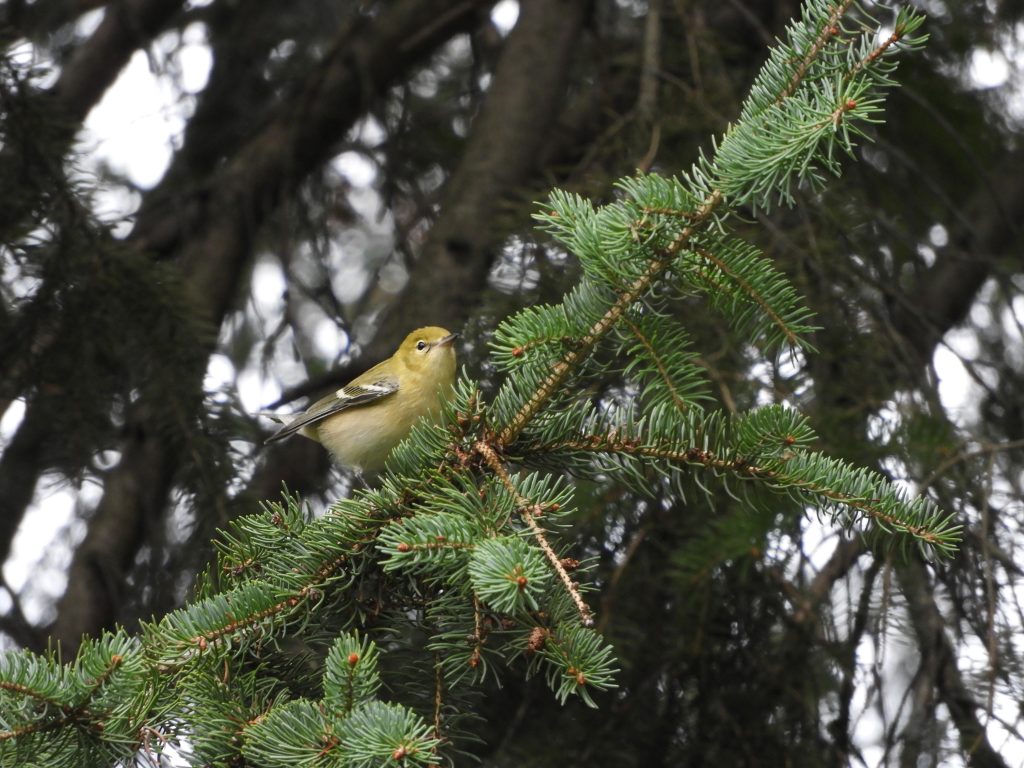
Birders anticipate and enjoy encountering warblers when they move through in waves. It is as if pockets of them descend around you and are everywhere for a few minutes, maybe for as much as half an hour, and then they seemingly fade away. I think today I walked into a mega-wave of Bay-breasteds, they seemed to be on every tree flitting to every other tree, never staying still. I took 132 photos and deleted all but about six. I had many like this.
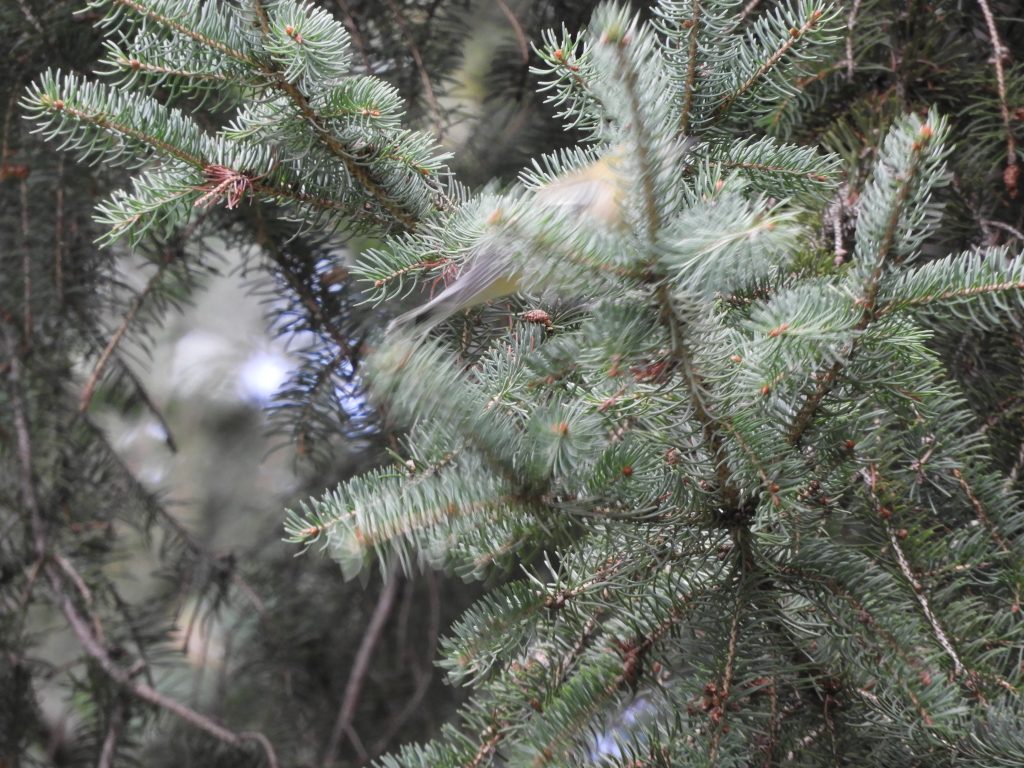
Although they were my Bird of the Day it wasn’t a Bay-breasted Warbler monoculture. I was also treated to Black–throated Green, Black–throated Blue, and Magnolia Warblers, a surprise Ovenbird, several Northern Parulas, Red–eyed Vireos and perhaps a Philadelphia Vireo. After a full morning I noted that there will be many more such days ahead when I can fire off hundreds of photos to no effect, so why continue spoiling today, so I left for a late lunch.
